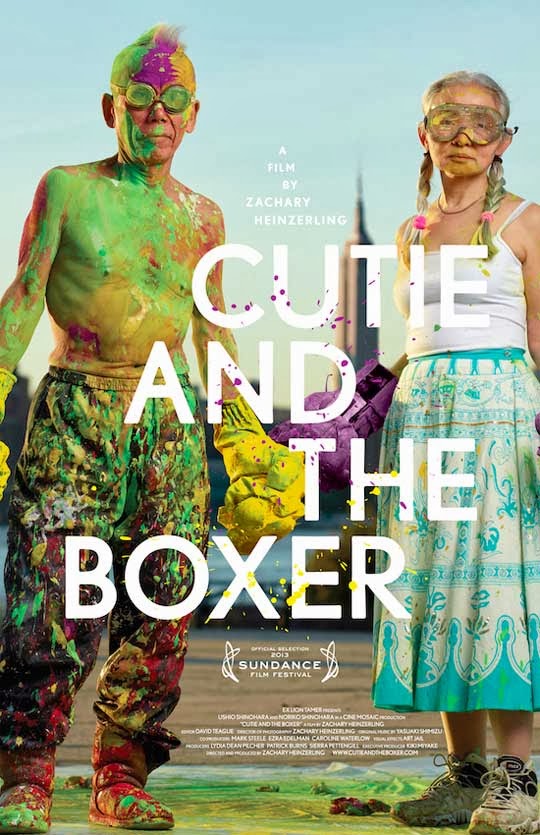The film opens with the celebration of Ushio's 80th birthday. Ushio Shinohara is a popular artist who is famous for imitating American pop art back in '60s Japan and came to the United States in the early '70s. He was slightly deterred because his success didn't transfer over to New York City. People liked his work, but it wasn't their taste. Still, Ushio enjoyed success and had his own art store, his sculptures and boxing paintings (for which he's most famous for, in which he uses boxing gloves to make his creations) displayed in several art galleries.
Heinzerling depicts a relationship on the rocks, Ushio often seen undermining Noriko and her work because his fame is dwindling and hers is rising. Through Noriko's eyes, and her art titled "Cutie and Bullie," we get a brief animated tale of her life: coming to New York City at 19, meeting Ushio, trying to find time to paint, and her loss of ambition amongst her changing lifestyle, raising their son, and Ushio's alcoholism.
Cutie and the Boxer is a film that seems at first glance like it's showcasing Ushio and Noriko's tumultuous 40-year relationship. But, thinking on it, the film also studies age and perceptions, both inside and outside the relationship. It looks at the rise and fall of Ushio's career and how Noriko's success doesn't make him particularly happy because he was always the more popular one. There's also the traditional values of a wife's place that Ushio holds onto.
It looks at how two people can be similar in passions, but completely opposite in approach and how their struggling relationship has impacted them, mostly focusing on Noriko. The choice of art as a career and the consequences of that choice. All these things are underlying themes in the film, but are tainted by Heinzerling's slow-moving storytelling and occasional lack of focus.
Heinzerling paints Noriko in a better light than he does Ushio, but it's not necessarily a negative thing in this case because everything is presented as very factual and Heinzerling isn't taking sides, just presenting his audience with the truth. The style of the film can be a little frustrating, given the back and forth between the couple's daily lives and their past. In fact, the animated portion of the film is the strongest, most unique, and most interesting part of the entire documentary and it's a shame that it couldn't all be told in that style.
Heinzerling chooses to focus on the couple and their art, but it unfolds too slowly and at times it feels like the film has a lack of focus, altering between showing us their art creations and their rocky relationship without a balance. Ultimately, there isn't enough driving force behind Heinzerling's film for it to impact or completely captivate an audience, no matter how intriguing the subjects may be.














